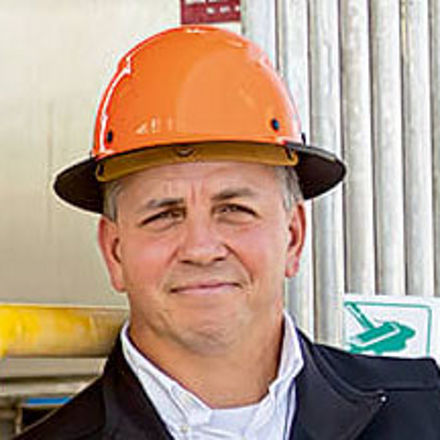Some of the famous sons of Memphis, Tennessee are known by just two letters. A bronze statue on Beale Street honors blues legend W.C. Handy, and the late guitarist B.B. King opened the first of his eponymous clubs on that very street more than three decades ago. Lesser known among the tourists that flock to the birthplace of rock’n’roll—500,000 people yearly make a pilgrimage to Elvis Presley’s home Graceland—is M.C. Stiles. Still, in the 1970s and 1980s, Maynard C. Stiles was considered one of the most powerful officials in Memphis’ city government besides the mayor. Stiles served first as the sanitation director and later as the head of the Memphis Public Works department.
Stiles also has a monument of sorts in Memphis, and it is one befitting a legend of sanitation. One of the city’s two wastewater plants is named after him. The M.C. Stiles Wastewater Treatment Facility sits only a short drive north of downtown Memphis on the banks of the Wolf River, one of the many tributaries of the mighty Mississippi.
While not as flashy and entertaining as Graceland or the music clubs of Beale Street, the site’s raw sewage pumps and circular water clarifiers play a significant part in the city’s history. Completed in 1977, the M.C. Stiles plant was only the second attempt to clean the wastewater of Memphis’ businesses and citizens. It followed the completion of T.E. Maxson—named after an influential city engineer—two years earlier. Before that, millions of gallons of Memphis wastewater were simply dumped into the city’s rivers, creeks, and ditches.

Robert M. Knecht is Stiles’ heir as the current director of Memphis’ Public Works Division. The former Air Force computer specialist, twenty years with the city and almost ten years in his current role, also wants to shape the city’s environmental history—with the help of Evonik. “I am trying to improve water quality, since we have such a big influence on that. I like to fish, and as someone who uses the river, I want to make sure I have done what I can for the ecosystem,” Knecht says during a visit to the M.C. Stiles facility, where Evonik has operated a peracetic acid plant since 2019.
A LONG-TERM INVESTMENT
Evonik’s Wolf River plant supplies peracetic acid to M.C. Stiles and T.E. Maxson, the two largest users of this bacteria killer for municipal wastewater disinfection in the world. It constitutes an innovative approach for municipalities that traditionally rely on other disinfection methods like chlorine or ultraviolet treatment. “It’s a huge long-term investment,” says Knecht as he stands on a walkway above the disinfectant channels of the Stiles facility, a stone’s throw from the slow-moving Mississippi River. “With costs of $24 million a year, it is the largest investment in Operations & Maintenance we have made in a long time.”

Peracetic acid, or PAA, is a powerful organic acid with a strong oxidation potential—perfect for killing bacteria like E. coli in human or animal waste. PAA is produced through the reaction between hydrogen peroxide (Evonik is one of the world’s largest producers of that cleaning agent), acetic acid (vinegar), water, and a catalyst. “As down it breaks, its oxidative properties are attacking the bacteria,” explains Greg Conrad, Director of Water Treatment Solutions at Evonik’s Active Oxygens business, during a tour of the company’s Memphis site.

PAA is already widely used as a disinfectant in the poultry industry and in beverage processing. About 30 percent of the production from the Wolf River Plant is sold to poultry producers in the neighboring states of Arkansas and North and South Carolina. However, PAA’s use in wastewater disinfection is still relatively new despite its apparent advantages. “The great thing about peracetic acid is that it breaks down into environmentally benign products: vinegar, oxygen, and water,” explains Conrad.
Tennessee didn’t require the disinfection of its sewage until the 2010s. When the state started considering more stringent regulations, Memphis tested other established disinfection methods like chlorine and ultraviolet treatment. But chlorine leaves a residual in the water—which contains carcinogenic by-products and requires costly dechlorination. Ultraviolet treatment involves a lot of capital investment and has high maintenance costs. In addition, UV treatment is not a good alternative for cities like Memphis, which have a vast share of industrial waste with organic components that turn the water brown, making it impenetrable to UV rays. This high proportion of industrial waste—about 60 to 80 percent of Memphis wastewater comes from industries like pulp or paper producers—differentiates the city from many other municipalities. Also, manufacturing plants in Memphis don’t have to treat their own wastewater before it enters the municipal system. In other words, wastewater treatment is a herculean task for Memphis.

After several tests and a pilot program, Memphis opted for PAA and an 18-year contract—including the option for two five-year extensions—with the PAA producer PeroxyChem starting in 2018. Two years later, Evonik acquired PeroxyChem for $640 million.
The contractual agreements with the city were as unique as the disinfection method. The company leased the land from the city and built its peracetic acid production plant on the site of the Stiles facility. A plant close to the site cuts down on transportation costs. “It is unique for suppliers to have the ability to work with a municipality to bring value to them beyond just the chemistry, to provide additional services and create jobs,” says Conrad.

»I use the Mississippi River to fish, and I try to improve its water quality«
ROBERT M. KNECHT DIRECTOR OF PUBLIC WORKS, CITY OF MEMPHIS
“A LOT OF SKIN IN THE GAME"
In the plant’s parking lot, double-walled stainless steel Isotainer trucks sit lined up. The tanks are refrigerated to control temperature and prevent any potential for decomposition when the PAA is transported to Evonik customers in the region. “We are the only company with the authority to haul PAA in bulk,” says Conrad. For the transport to the Stiles plant, Evonik opted for a more direct solution than truck delivery. An underground pipeline, double-walled, resistant to chemical corrosion, and a quarter-mile long, carries the PAA from the gleaming Wolf River tanks along a fence to the Stiles’ disinfectant channels.
Robert Knecht is also happy with these arrangements. “I was very optimistic that we were going to get more than just a supplier—a long-term partner,” he says. “I wanted a company to actually come to Memphis, bring new jobs to our city, and build a facility close by, because we were going to be one of the country’s largest users of peracetic acid,” he says. As part of its service, Evonik also ensures that the bacteria level doesn’t exceed the permitted level. “If the bacteria level rises above a certain amount, we would be responsible for the fines from the Environmental Protection Agency,” says Conrad. “We have a lot of skin in the game.”

Evonik engineers also developed a unique approach to determine the correct dosage of PAA for the Stiles plant. Most suppliers determine the amount of PAA needed to reduce the bacteria to the desired level on the basis of the incoming wastewater’s flow rate and a predetermined dosage. At the end of the process, plant operators test the water for disinfectant traces to ensure that the bacteria are significantly reduced or gone. Evonik workers also check up on these residuals—but the check-up doesn’t determine potential adjustments to the PAA levels.
Evonik adjusts the dosage parameters at the beginning of the process on the basis of the changes in water quality. “We wanted to reduce the amount of PAA we use,” says Conrad. “You don’t always need the same amount if the water quality is better.” Critical to analyzing and measuring the water’s quality is its color. “The wastewater color constantly changes,” he explains. “One day, it could look like a cup of tea; the next, it could look like espresso. It all depends on what is coming into the water.” Conrad and his team found that the water’s color indicates its pollution level. The results of this color analysis are then fed into an algorithm that determines the level of needed PAA.

TAILOR-MADE DISINFECTION
Things run a little differently at Memphis’ second wastewater facility, T.E. Maxson, which serves the southern part of the city. There is no pipeline connecting it to the Wolf River plant. Instead, Evonik uses its Isotainer trucks to deliver the disinfectant and fill the peracetic acid tanks next to the contact channels.
Because the wastewater quality in the southern half of Memphis is different, Evonik doesn’t use color analysis but instead analyzes the Chemical Oxygen Demand (COD) of the wastewater at Maxson—a yardstick of the oxygen required to break down organic compounds in water. The COD test is typically used to determine the effectiveness of wastewater treatment processes and to monitor the levels of organic pollutants in water. “COD is the organic loading of the water—how dirty the water is,” says Conrad. “When the organics are high, we use more PAA.”
Conrad, who lives in Oklahoma and started his first business when he was 20 years old, also pioneered PAA for treating wastewater used in oil extraction with hydraulic fracturing—fracking. “It has been my passion to find green and sustainable solutions,” he says. “I have dedicated my entire career to water.”

The disinfection of the wastewater with PAA at the Stiles facility is the last step before the water is released into the Mississippi. Still, it doesn’t look like drinking water as it flows over a concrete wall towards the river. It’s more like the color of tea, albeit considerably lighter than before. But the water is disinfected and gets diluted enough when it enters the massive stream. The health risks are negligible.

Due to its relative novelty, Evonik is still working on the broader acceptance of PAA in wastewater treatment in several states. “People are not used to it,” says Conrad. “We are still in the infancy of the use of PAA, but it is catching on very quickly.” In Tennessee and Arkansas, it is gaining acceptance, and slowly also in Texas, Ohio, and Kentucky. “But it might not always be the best fit for a city. In smaller applications and where there is fairly clean water without much industry, UV might be a better option,” he cautions.
Evonik will also approach the industrial plants to help them clean their own wastewater before it enters the city system in Memphis. That would lower the companies’ bills from the city and make it easier for Evonik to treat the wastewater at Stiles and Maxson. “We want to make the water cleaner by treating it first at industry facilities upstream,” says Conrad. He glances at the M.C. Stiles pools with the bubbling sewage and gets into his SUV to drive back to Oklahoma. “We make a living killing bacteria,” he says.


